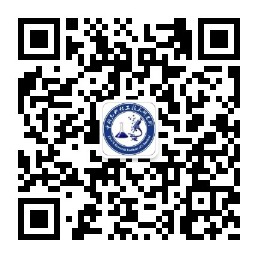欢迎访问中科光析科学技术研究所官网!
- 联系我们
- 关注微信

欢迎访问中科光析科学技术研究所官网!

免费咨询热线
400-635-0567|
家用电灯检测项目报价? 解决方案? 检测周期? 样品要求? |
点 击 解 答  |
本标准规定了进口旧电子电气产品的电器电气安全、机械安全、电磁兼容、环境保护、能源效率等的检验技术要求的通则。本标准适用于以下用于国内销售使用的旧电子电气产品:——大型家用电器产品;——小型家用电器产品;——信息和通讯产品:——音视频产品;——照明产品;——电气和电子工具(大型静态工业工具除外);——玩具、休闲和运动产品;——医用产品(所有被植入和被感染的产品除外);——监测和控制设备;——自动售货机。产品示例见附录A。
These requirements cover electrically operated household clocks having an input rating of not more than 30 watts and 250 volts to be used in ordinary indoor locations in accordance with the National Electrical Code, NFPA 70. These requirements do not cover clocks intended primarily for industrial or commercial installations, clocks that form part of a master clock system, outdoor clocks, time stamps, job card recorders, timers, and similar time-indicating and recording appliances, nor do they cover illuminated clocks intended for use as portable electric lamps or for other illuminating purposes. A product that contains features, characteristics, components, materials, or systems new or different from those covered by the requirements in this standard, and that involves a risk of fire or of electric shock or injury to persons shall be evaluated using appropriate additional component and end-product requirements to maintain the level of safety as originally anticipated by the intent of this standard. A product whose features, characteristics, components, materials, or systems conflict with specific requirements or provisions of this standard does not comply with this standard. Revision of requirements shall be proposed and adopted in conformance with the methods employed for development, revision, and implementation of this standard.
This implementing Technical Regulation shall apply to household electric lamps supplied directly from the mains (filament and integral compact fluorescent lamps), and to household fluorescent lamps (including linear, and non-integral compact fluorescent lamps), even when marketed for non-household use. .
This standard specifies the test conditions and method of measurement of luminous flux, lamp wattage and lamp life as given on a label on the lamp packaging, together with a procedure for verification of the declared values. Only those parameters that are specific to the above mentioned Directive are included in this standard. All other parameters are included in the relevant lamp performance .
This standard specifies the test comditions and measurement of luminous flux, lamp wattage and lamplife as given on a label on the lamp packaginig, together with a procedure for verification of the declared values
This part of IEC 60300 gives guidance on specifying the required dependability characteristics in specifications, together with specifications of procedures and criteria for verification and validation: - advice on specifying quantitative and qualitative reliability, maintainability, availability and maintenance support requirements; - advice to purchasers of a system on how to ensure that the specified requirements will be fulfilled by suppliers; - advice to suppliers to help them to meet purchaser requirements.
This standard has been produced under Standardisation Mandate M/202 in response to the European Commission Directive implementing Council Directive 92/75/EEC. This standard specifies the test conditions and method of measurement of luminous flux, lamp wattage and lamp life as given on a label on the lamp packaging together with a procedure for verification of the declared values. Only those parameters that are specific to the above mentioned Directive are included in this standard, all other parameters are defined in the relevant lamp performance standards.
This European Standard has been produced under Standardization Mandate M/202 in response to the European Commission Directive implementing Council Directive 92/75/EEC with regard to energy labelling of household lamps. A method of classification of lamps according to energy efficiency is given in the Directive and is not a part of this standard.nThis standard specifies the test conditions and method of measurement of luminous flux, lamp wattage and lamp life as given on a label on the lamp packaging, together with a procedure for verification of the declared values. Only those parameters that are specific to the above mentioned Directive are included in this standard. All other parameters are included in the relevant lamp performance standards.nLamps covered by this standard are:n—mains voltage tungsten filament lamps;n—mains voltage tungsten halogen lamps;n—self-ballasted lamps;n—double-capped fluorescent lamps;n—single-capped fluorescent lamps.
This part of IEC 60300 gives guidance on specifying the required dependability characteristicsin specifications, together with specifications of procedures and criteria for verification andvalidation.The guidance provided includes the following:– advice on specifying quantitative and qualitative reliability, maintainability, availability andmaintenance support requirements;– advice to purchasers of a system on how to ensure that the specified requirements will befulfilled by suppliers;– advice to suppliers to help them to meet purchaser requirements.Other documents, such as legislation and governmental regulation may also placerequirements on systems and these should be applied in addition to any specificationsderived in accordance with this standard.NOTE 1 Whilst mainly addressing system and equipment level reliability, many of the techniques described in thedifferent parts of IEC 60300 may also be applied to products, items or at the component level. The term system isused throughout this standard.NOTE 2 This standard does not give guidance on the management of dependability programmes or on the variousactivities necessary to fulfil stated availability, reliability, maintainability and maintenance support requirements.For this general guidance, see other standards.NOTE 3 Safety and environment specifications are not directly considered in this guide. However, much of theguidance in this standard could also be applied to safety or environmental specification.NOTE 4 Specifications for the dependability of a service are not considered in this guide. This includes theprovision of a service such as those provided through Public-Private Partnership procurements.
 前沿科学
微信公众号
前沿科学
微信公众号
 中析研究所
抖音
中析研究所
抖音
 中析研究所
微信公众号
中析研究所
微信公众号
 中析研究所
快手
中析研究所
快手
 中析研究所
微视频
中析研究所
微视频
 中析研究所
小红书
中析研究所
小红书